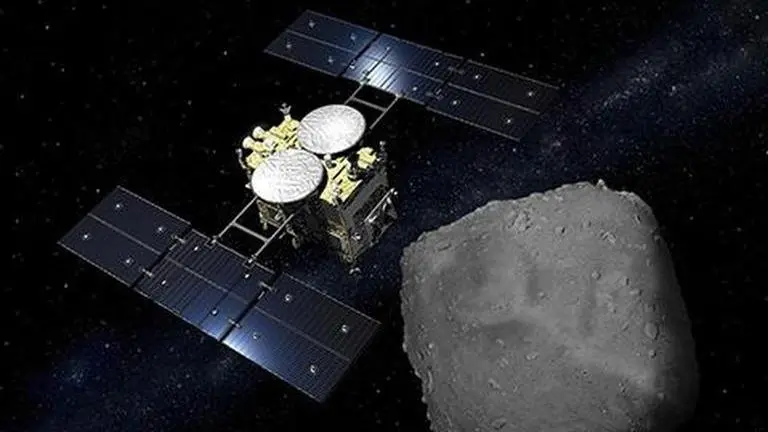Updated 24 July 2020 at 15:29 IST
Japan prepares for asteroid mission Hayabusa2's daring return to earth
The Japanese Space Agency is currently preparing for its Asteroid mission Hayabusa2’s return back home.The mission which was launched in 2014 to collect samples
- Science News
- 2 min read

The Japanese Space Agency is currently preparing for its Asteroid mission Hayabusa2’s return back home. The mission which was launched in 2014 to collect samples from asteroid Ryugu is all set to land later this year. As per astronomers, the collected material is from nearly 4.6 billion years ago and could provide insights on the beginning of life on earth. However, it is a risky mission wherein scientists have to ensure that the precious cargo with samples safely reaches their hands from the vacuum of space.
The landing
Previously, JAXA, in association with Australian Space Agency scheduled the landing of the samples on December 6 2020. According to JAXA, the landing site for the mission is a 122,000-square-kilometer region of South Australian outback known as the Woomera Range Complex.
Image of touchdown at the asteroid. (Credits: hayabusa2.jaxa.jp)
Advertisement
The mission
Hayabusa2 reached the Ryugu asteroid in June 2018 and descended on the asteroid’s surface on February 2019. It then fired a small projectile into the ground and scooping surface material into a container. The spacecraft then fired an impactor into the asteroid from a distance, thereby forming a small crater in April 2019. In July 2019, it swooped down again in to grab material ejected by the impact. Hayabusa2 finally left its orbit around the asteroid in November 2019 to begin its return journey.
Advertisement
According to JAXA, the capsule containing the collected sample would be dropped in December when Hayabusa2 passes by the earth. The capsule must endure fiery reentry into earth’s atmosphere before parachuting down. The spacecraft is will return back to spae for an extended mission tracking more stars.
For tracking the capsule’s touchdown point, the Scientists are relying on drone-based reconnaissance and radio beacon, international media reported. Once the capsule is found, it will be taken to a nearby building in Woomera called the Quick Look Facility from where it would be transported to Japan and Australia for study.
Image credits: global.jaxa.jp
Published By : Riya Baibhawi
Published On: 24 July 2020 at 15:29 IST

